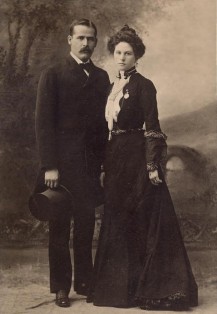A mustache on a woman isn’t as well received as on a cowboy. Eleanora Dumont’s reign as the Queen of Twenty-One came to an end when men began to make fun of her fading beauty. This love lesson was learned by one of the Old West’s most famous women gamblers. Love Lessons of the Old West: Wisdom from Wild Women is coming soon to bookstores everywhere. Stay tuned for news about the Love Lessons Learned giveaway package to find out how you can register to win. Visit www.chrisenss.com for more information. 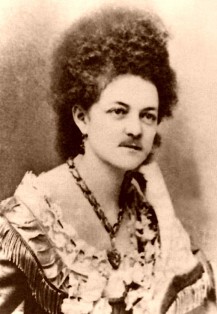
Journal Notes
Bat Masterson and the Bigamist
Don’t be afraid to go against the law to hold on to the man you love. Emma Walter married Bat Masterson long before her divorce to her first husband was finalized. You can’t let bigamy stand in the way of holding on to a man like Bat. This was a love lesson learned by Emma Walter. Love Lessons Learned from the Old West: Wisdom from Wild Women is coming soon to bookstores everywhere. Visit www.chrisenss.com for more information and to share your own love lessons. 

Love & the Sundance Kid
When you’re the paramour of an outlaw your relationship is bound to have longevity problems. This was a love lesson learned by Etta Place. Love Lessons Learned by Women of the Old West coming soon to bookstores everywhere. Visit www.chrisenss.com for more information.
Agnes’s Love Lesson
Nothing was more appealing to an Old West lawman than a damsel in distress. Hickok’s friends noted that once he spoke up for the Widow Lake at a city council meeting, “a look, a smile, or a kind word from her could win him.” This has been another Love Lesson Learned by Women of the Old West. Love Lessons Learned by Women of the Old West coming soon to bookstores everywhere. 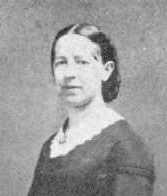
Calamity Love Lesson
Most men in the early days of the Old West lost interest in a woman who was skilled in the art of cursing. Some believed that St. Peter wouldn’t accept women who used profanity regularly. Too bad Calamity Jane didn’t know this love lesson. Love Lessons of the Old West coming soon to a book store near you. 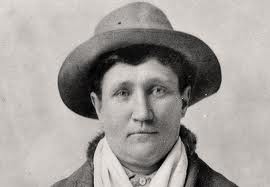
Zorro
Zorro was a huge hit during the fifties and sixties. The daring masked man in black cape who made his signature Z with quick slashes of his rapier was imitated by millions of kids; Z’s carved into the tops of wooden school desks across the country became epidemic. There were many Zorros, but the one best known on the early TV series was played by Guy Williams, born Armando Catalano-six feet 2 inches, handsome, athletic. He had more than a few would-be senorita-moms turning the show on for their children. Finally unmasked, Zorro died in 1989 at age sixty-five of a brain aneurysm. 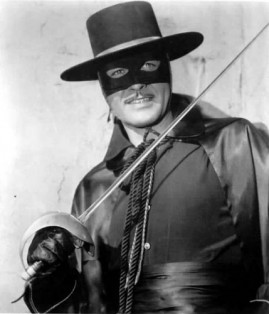
Red River Star
If you die at the height of your fame, you can achieve immortality. If you live long enough for your fame to fade, you are forgotten. Montgomery Clift belongs in the latter category. In the early 1950s his moody, sensitive performances in A Place in the Sun, From Here to Eternity and Red River made him a major heartthrob. More than that, he added an introspective, psychological dimension to those roles which made him the idol of two men who would become the most popular actors of the decade, Marlon Brando and James Dean. But by the time Clift died a little over a decade later, his obituary wasn’t front-page news. And unlike other ill-fated stars of the decade, such as James Dean and Marilyn Monroe, the forty plus years since Clift’s death have produced only three or four biographies of his life. Clift had been on Broadway since he was 14, but fame in Hollywood seemed to strike him differently. Three years after his first film, in 1948, he was treated for alcoholism. Some said it had to do with his insecurity concerning his many clandestine homosexual affairs. But whatever the cause, it turned a thoughtful, delicate actor into an inarticulate one. He soon began mixing pills, mostly depressants, with his drinks. He threw food at dinner parties, threw childish tantrums, and suffered blackouts. By the late 1950s movie studios were reluctant to cast Clift, especially since his last few films had not been hits. He showed up in supporting and cameo roles, but even then his long scenes would have to be chopped up because he couldn’t remember all his lines for one take. In 1966, after not working at all for four years, Clift was cast as the lead in The Defector. It was a B-movie spy thriller and he knew it, but he treated it as his comeback. To prove to the studios he was reliable star, he insisted on performing all his own stunts, including a grueling swim in the freezing Danube River, even as he was suffering from phlebitis and cataracts and was trembling. Clift, still drinking, seemed happy with his performance. But then he saw a rough version of the movie. In it the 45-year-old actor looked like an old man. He returned to New York that summer deeply depressed and drinking even more. In mid-July he saw or spoke to several of his remaining friends. He was uncharacteristically emotional, and some later believed he was telling them goodbye. He spent Friday night, July 22, alone in his bedroom, which was not unusual. But his male nurse was concerned when he found the door locked at 6 a.m. Saturday. He discovered Clift lying face up on his bed, dead, and wearing only his glasses. An autopsy revealed that the faded film star had suffered a heart attack. But one friend, reflecting on Clift’s last thirteen years, called it “the slowest suicide in show business.” 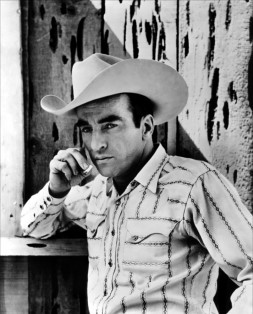
Brando
Marlon Brando, born to two alcoholic parents, was the third actor to receive two best actor Oscars: On the Waterfront (1954) and The Godfather (1972). He turned down the second award in protest for treatment of Native Americans, as well as a reluctance to glorify the mafia. Toward the end of his days, his life became more of a drama than any he portrayed on screen: His self-imposed exile on Tahiti, his son’s murder trial (where he refused to take an oath, claiming he as an atheist), and his growing size, obesity, and blindness. He died in 2004 at the age of eighty of lung failure owing to pulmonary fibrosis, excessive scar tissue in the lung. Brando said, “I don’t mind that I’m fat. You still get the same money.” He was paid $4 million for his ten minutes’ performance in the movie Superman. 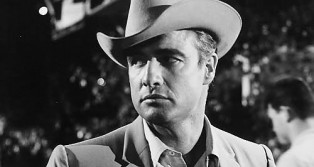
Chalk Beeson
Well-known Dodge City, Kansas lawman and politician, Chalk Beeson claimed he “drank bullets in his coffee for breakfast.” Few doubted how tough Sheriff Beeson was particularly desperados raising hell in Ford County, Kansas. Born in Salem, Ohio in 1876, the highly esteemed, man of nerve had a reputation for tracking even the most wanted criminals down until they were caught. On November 1892, Chalk decided to ride into the Oklahoma Territory on his own to capture the notorious Doolin Gang. The gang had robbed the Spearville Ford County Bank in broad daylight and Chalk was not going to let them get away with it. According to the August 12, 1912 edition of the Hutchinson, Kansas newspaper the Hutchinson News, Chalk was so provoked by the Doolin Gang’s actions that he refused to wait until a posse was formed before he took out after the bandits. “He went to Oklahoma under an alias”, the newspaper article read, “and when he found the headquarters of the gang neat Ingalls, he went to Guthrie and was appointed a deputy United States marshal, as he was far out of his juristic as sheriff.” One particular man in the gang Chalk was determined to arrest was Oliver Yantes, who was living with a woman in a cabin five miles from Ingalls. Chalk and a lawman he believed he could trust, rode to the Yantes cabin and they hid along the path a few feet away from the entrance. Chalk concluded that Yantes would have to travel the path the following morning in order to take care of his horses. When Yantes appeared Chalk ordered him to throw up his hands, but instead of doing what the officer ordered the bandit attempted to run. The plan had been for the deputy to shoot the desperado if he offered resistance while Chalk watched for fear other members of the gang might be there. The mist had dampened the caps of the deputy’s gun and when he failed to fire Chalk believed the lawman had been betrayed. Chalk fired on Yantes just as the woman ran from the house with the bandit’s revolver. Yantes was fatally wounded and died before Chalk could get him to Ingalls. Chalk collected the reward offered by the state, the banks, the railroads, and the insurance company for the apprehension of any member of the Doolin Gang, dead or alive. In addition to serving three terms as sheriff of Ford County, Chalk also served as a representative of the area in the state legislature from 1902 to 1906. Chalk’s abilities extended beyond his work in law enforcement and politics. He was an accomplished horse trainer and an expert musician. He could play the violin, trombone, and French horn. In 1885 Chalk founded the Dodge City Cowboy Band. The band was made up of more than eighteen men – drummers, trumpet and fiddle players. The Dodge City Cowboy Band performed at the Long Branch Saloon, owned by Chalk, and entertained local citizenry by marching in parades. The band wore they best cowboy attire including their six guns which they fired in the air to punctuate a chord or musical phrase. The tough and talented Chalk met his demises on August 9, 1912. Three days prior to his death Chalk was sitting atop his horse at the C.O.D. Ranch, watching a nearby road construction crew work. His mount was suddenly spooked. The horse bucked and reared and before Chalk was able to get the animal under control it threw him hard against the saddle horn. Chalk never recovered from the serious injury. Chalk Beeson’s well-attended funeral was held on August 11, 1912 at his ranch. Local businessmen and luminaries spoke highly of the contributions he had made to the community. Benevolent and fraternal society members, as well as civic and church representatives turned out to brag about all he did to make Dodge City a safe place to live. The comment mourners uttered the most, after noting the positive impact he’d had on Ford County, was “we just thought that one of Chalk Beeson’s strengths could withstand the worst kind of injury.” 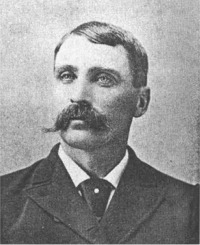
True Grit
After acting as either a cowboy or a soldier in nearly one hundred films, John Wayne finally won a best Oscar for True Grit (1969). The quintessential macho man was himself exempt from service during World War II owing to a serious shoulder injury. Winning the Oscar, some say, added another ten years to his life. Although he was a longtime smoker, averaging four packs a day, Wayne nevertheless died of gastric cancer at age seventy-two in 1979. In 1955 John Wayne was among two hundred twenty cast and crew members who worked on the film The Conqueror. It was shot on a location in Utah, which was contaminated by radioactive fallout from atomic bomb tests. Much of the soil was transported back to Hollywood for studio scenes. By 1980 more than ninety of those who had worked on the movies contracted cancer; forty-six died. Even though Wayne knew of the danger, often carrying a Geiger counter onto the set, he believed the risk insignificant. 

